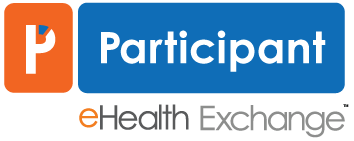A Healthcare Organizations Dilemma!
In a recent article published by the AJMC it was stated that despite technological advances, 75% of healthcare communication is still being processed through old fashion faxing. I would say if you take communications via telephone out of that equation it would be closer to 90%, but that is just from my personal observation with no factual evidence to back it up. Either way I think it is safe to state that faxing is not only important to healthcare but is currently THE vital tool required for the success of any healthcare organization. Without it, communications between healthcare providers, organizations, payers would come to a screeching holt, and so to would your business.
With demand always follows a flood of options to choose from, and that is no different for faxing. In the time I have spent in healthcare facilities I have seen everything from desktop fax machines, to top of the line electronic faxing solutions with every bell and whistle you could ask for. Some machines that still spit out piles paper hourly, while others are tightly integrated with an electronic health record. The one thing they all have in common is that they are just faxes, from low tech to high tech they are still reliant on the phone carriers to transport that data successfully. Fun tidbit not all carriers are equal in their ability to transport a fax, but that is for another day and another blog.

So how do you decide which is best for your organization? In my experience when choosing a faxing solution, the first question is always about cost, and for some reason healthcare trends towards the cheapest route. When discussing pricing options for our hFax solution with potential participants I’m always asked if we can do it cheaper, this is BEFORE any details of our platform have been reviewed. My typical reply is that there are cheaper options out there, but in those cases, you get what you pay for. This always gets me a glazed overlook because they are simply looking for a faxing solution, documents need to get from point A to point B successfully period. The cheaper fax solution can do that right? Yes, in theory that is true, what happens between point A and point B does not differ much between faxing solutions. As I have mentioned before all are reliant on the same phone carrier infrastructure to deliver your faxes.
After many conversations like this, I have come to realize healthcare organizations may not know what to ask other than “How much does it cost?” when deciding on a faxing solution. Because faxing is no longer just faxing, and because it is the lifeblood of most healthcare organization, I wanted to provide with a few questions that might help you understand the cost differences and potentially help you make a better long term decision for your organization.
Questions for Your Faxing Provider
1. Is your solution HIPAA HITECH compliant?
If the answer is no, immediately move on. There is no room in healthcare for breaches in PHI, HIPAA and HITECH compliance is a must. The penalties for willful neglect are increased under the HIPAA HITECH Act. These HIPAA violation penalties can extend up to $250,000, with repeat/uncorrected violations extending up to $1.5 million. Under certain conditions, HIPAA’s civil and criminal penalties now extend to business associates.
2. Does your IT or communications team understand healthcare regulation complexities, and how available to you if there is an issue?
If the answer to the question is no, move on. That faxing solution will NEVER understand why a call from you proclaiming, “my fax is down”, should be a level red alert and immediate action is need. If they do not care about the success of your faxes as much as you do then they should not be your partner in communications.
3. Do you provide an Analog or VoIP solution?
VoIP solution are always going to be cheaper, but you should know that faxes were not designed to work with a VoIP network and reliability with be greatly diminished. In the realm of unified communications (UC), there is a wide variety of technologies that can send data. This includes company SMS, electronic forms, and video conferencing software as well as fax. Each of these transmits relevant data over internet communications channels, which means that every aspect of the communications technology will have to be completely HIPAA HITECH compliant. Here are a few of the UC features that must be encrypted to protect patient healthcare data: Texts, Voice Calls, Call Recordings, Faxes, Voicemails, Video Conferences, Chats, and File Sharing. Encryption of these messages is required at every stage. Additionally, encryption needs to happen when the data is at rest as well as when it is in transit.
4. Do you offer any toolset outside of just faxing? For example, can I monitor workflow and productivity through your platform?
With faxes consuming 75% of your organization communications, this also mean you need the staff to manage those interactions. Would a solution that provides analytics to determine workload and productivity be helpful? When we first start working with any new healthcare organization, I always ask how long it takes to process an incoming fax, and inevitably I am always told within 24 hours. We rarely find that this is accurate, but simply a goal administration hopes they are obtaining. 48 hours seems to be the magic number for a fax to be touched for the first time by a member of a care team, and depending on the workflow there could be countless touches before that records makes it into the providers hands. How many touches do you faxes have, if you don’t know the answer you may have the wrong faxing solution.
5. How many simultaneous faxes can I receive at once?
The most irritating thing for your referral partners to see when they send you a fax is a failure due to a busy signal. If your fax provider does not offer a solution solid enough to prevent busy signals you may consider looking elsewhere.
6. Do you offer other communication tools outside of faxing?
The truth of the matter is the infrastructure around faxing is failing, and one day sooner rather than later it will simply stop working. If your fax provider does not acknowledge this, you have got a problem. If they acknowledge this but have no plans to evolve and plan, you have problem. The fax authority states that 50 pages is a ‘large’ fax, how does your solution help you process those large records requests? With the rise in Telemedicine, do you have the tools to allow your providers to access and communicate the records necessary for patient care?
7. If faxing breaks today, how will you help my healthcare organization communicate?
To me this is the most important question to ask, if your faxing solution does not have a solution to this find one that does. As an industry we will not know when the faxing infrastructure will break, though we know it will.
So next time, when you are faced with a choice of new faxing solution do not start with “how much?”, find out what that solution can do for you and your organization. This is an important decision, your livelihood might even depend on it, ask more questions, and listen carefully to the answer.


